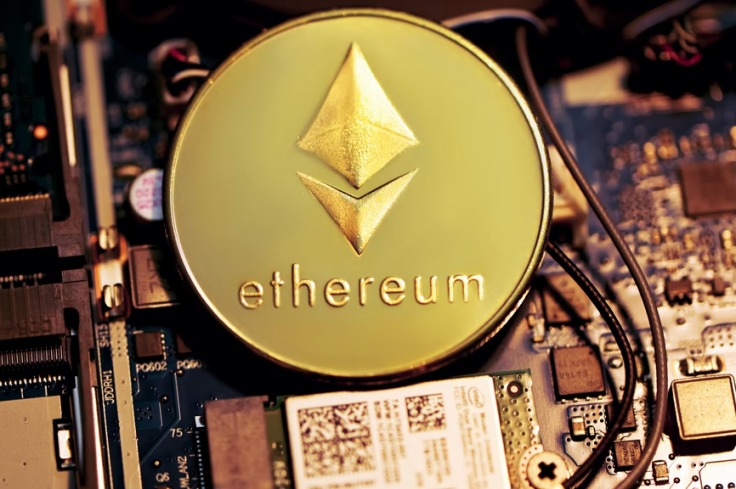Ethereum Merge Confirmed For September. What Investors Can Expect
KEY POINTS
- Ethereum developers have confirmed the merge will take place in September
- The merge will move Ethereum to the more sustainable proof-of-stake validation model, drastically reducing its energy consumption
- In the short term, the merge could result in a lot of volatility for Ethereum
It's been a long time coming, but we're just weeks away from one of the most important cryptocurrency events of the year. Ethereum developers have confirmed it will roll out the merge in September. The merge will move Ethereum from the energy-guzzling proof-of-work validation model to a more sustainable proof-of-stake system. With billions of dollars in applications on Ethereum's ecosystem, there's a lot at stake for ETH holders and the developers that use its network.
How the Ethereum merge will unfold
According to a blog post, developers have successfully completed all its testnet upgrades and are now ready to launch the merge on the mainnet.
The switch is a two-step process. First comes a network upgrade called Bellatrix on Sept. 6. After that comes the Paris upgrade. This will happen between Sept. 10 and 20. Without getting too technical, the newly merged chain needs to reach a point where it won't be vulnerable to attack before the team can fully flip the merge switch.
What investors can expect
If you're a long-term Ethereum investor, the merge is an important step on a longer road toward making the crypto giant more sustainable, scalable, and secure. Ethereum was the first crypto to introduce smart contracts and still dominates the market. But it also struggles with network congestion and high gas fees -- issues that the next big upgrade (called sharding) will address.
You may be tempted to try to buy or sell Ethereum in the coming weeks to make a short-term profit from merge-related price changes. The difficulty is that it's almost impossible to predict what will happen -- which is why this type of trading is extremely risky. Here at The Ascent, we advocate investing for the long term rather than trying to time the market. Here are some of the factors that could contribute to short term volatility:
1. Expectations are extremely high
Ethereum's price has seen some significant gains in recent months, largely due to pre-merge speculation. Many people believe the Ethereum merge will result in lower gas fees. It won't. Neither will it improve transaction speeds. When reality fails to live up to expectations, it could adversely impact ETH's price. On the other hand, Vitalik Buterin, the man behind Ethereum, says the merge hasn't yet been fully priced in.
2. Speculation is rife
Crypto prices often suffer from a phenomenon known as "Buy the rumor, sell the news." As we approach a major event such as the merge, people speculate on big price increases. It can develop into a buying frenzy that drives prices to unsustainable highs. Traders then try to sell at a high when the much-anticipated event actually happens. This in turn pushes the price down. Don't assume that Ethereum's price will go up on Sept. 6 when it rolls out the merge.
3. There could be unforeseen technical glitches
Some have compared Ethereum's merge to changing the engine on an airplane mid-flight. It isn't an easy endeavor and there may well be technical issues. Ethereum developers have tested and tested and tested some more, but no amount of dress rehearsals can guarantee a perfect performance in real life. For Ethereum investors, the hope is the years of preparation and testing mean the only issues we see are minor glitches rather than anything more serious.
4. The newly merged Ethereum could be considered a security
The way cryptocurrencies are categorized can have a big impact on how they function in the U.S. The SEC believes many cryptocurrencies are actually securities and should come under its jurisdiction. This would mean following strict rules about how they release information and how they are traded. Right now, most cryptos are considered commodities and don't have to jump through the SEC's hoops. However, some lawyers argue that the switch to proof-of-stake means the SEC is more likely to consider Ethereum as a security.
Bottom line
As a crypto investor, what really matters is your long-term view of Ethereum. If you see your investments through a 10 or 20 year lens, short-term price fluctuations around a specific event become less relevant. The key question is whether the upgrade impacts your original reason for buying Ethereum and whether you believe it will perform well in the long term.
If we look at the bigger picture, Ethereum says the merge will cut its energy consumption by over 99%. It may also decrease the supply of ETH and increase the staking rewards investors can earn. Ethereum continues to be far and away the biggest smart contract crypto. Over 50% of total money deposited with decentralized applications is locked on its ecosystem.
All cryptocurrencies carry risk, which is why it's important to only invest money you can afford to lose. Make sure you understand the risks associated with both crypto in general and the specific asset you might buy. For Ethereum, one of the biggest risks is that it gets overtaken by newer blockchain projects, which is why upgrades like the merge are important. That said, the merge could create unforeseen issues at both a technical and investment level.
Don't let the headlines about the merge rush your investment decisions. Take your time to research the pros and cons and consider your own financial situation. Only you can decide how -- and whether -- Ethereum might be a good fit for your portfolio in the long term.
This article originally appeared in The Motley Fool.
Emma Newbery has positions in Ethereum. The Motley Fool has positions in and recommends Ethereum. The Motley Fool has a disclosure policy.





















